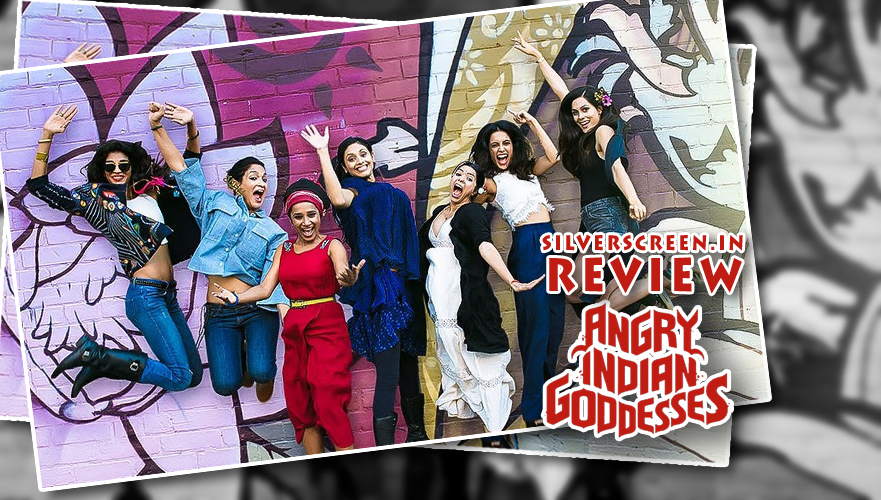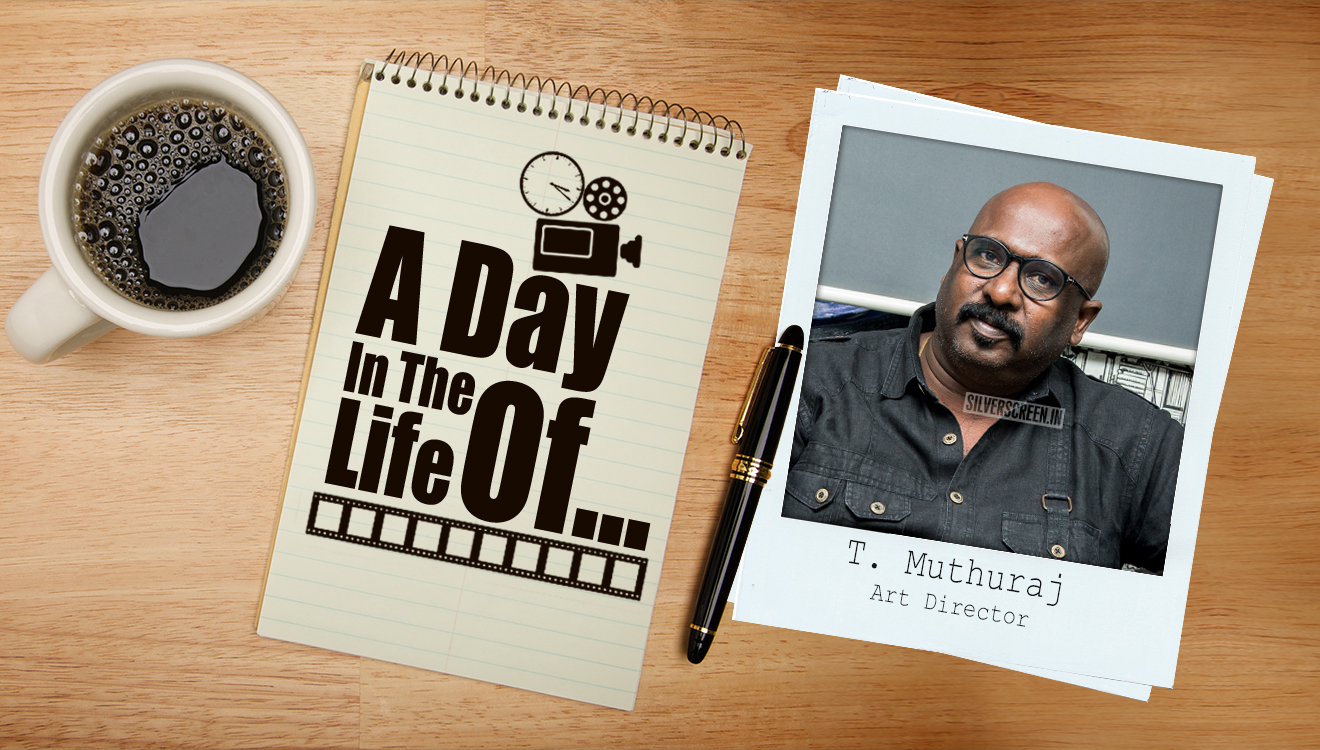Note: Spoiler Alert
Parts of Pan Nalin’s debut commercial film Angry Indian Goddesses (2015) are a delight to watch, but the film is also a huge missed opportunity. The promotional material calls it India’s first female buddy film, even though Chak De India (2007) might claim that title. Angry Indian Goddesses makes an audacious splash in stereotype-ridden Bollywood, with a seven-woman cast and arguably, no central hero-characters. The women do everything women generally do in cinema – wear skimpy clothes, dance with water, run into trouble, need help, and even get slapped. There’s just one difference: the looking, the desiring, the rescuing, the slapping, and pretty much everything else, is done by women. In a big step for Indian women and cinema, Angry Indian Goddesses litters its canvas with gritty and memorable moments of friendship, tenderness, and tear-filled laughter. If the film breaks new ground, it is for this raw ability to reach underneath deeply buried tears, pull out pleasurably complex emotions, and stir them into strong and nuanced relationships. And for that alone, we can forgive the film for failing to reach a greatness that was well within its grasp.
At the cinema hall, the majority of the audience is female. Many of these women have come with other women. Some came alone. Popcorn is forgotten during the intermission, because animated discussions are going on. And there is a sense of contentment, of having come for ‘our’ movie. Where we aren’t trespassers, or a lesser audience. Ask if the audience loved going to the theatre and watching this film with everybody present in the hall, and the answer will be a resounding yes.
*****
To its credit, Angry Indian Goddesses is a highly watchable film despite having a completely hodge-podge plot. Seven women come together for a wedding in Goa. That’s the solid part of the plot. The protagonists include Frieda Da Silva (Sarah-Jane Dias), a photographer who is getting married; her domestic help, Laxmi (Rajshri Deshpande); her cousin and an aspiring actress, Joana (Amrit Maghera); an aspiring singer, Madhureeta (Anushka Manchanda); a housewife, Pamela (Pavleen Gujral); and a businesswoman, Suranjana (Sandhya Mridhul), who comes with her daughter, Maya (Nia Dhime). Halfway into the story, Nargis (Tannishtha Chatterjee), an activist, arrives at the house. At first, everyone seems to be doing well. But gradually underlying struggles surface. In one significant difference from male-centric films, each subplot focuses on the aspirations of each woman and how important it is to them.
But here’s the problem – all these subplots are resolved not because of narrative movement, or character interactions over two hours. They are resolved in two-minute dialogues at some random point in the story (it can literally be any point in the story). By just being in this wonderful all-woman space, each character’s fundamental desire for living her life as she wants is rekindled. This is a powerful theme. And it works so well in the film that even a thin plot scaffolding would have carried the film.
Instead, Angry Indian Goddesses is a series of hostel-dormitory camaraderie scenes, and plot can go hang. Towards the end, the director decides to bombard us with ‘plot’. Guns, violence, police, women running around with flashlights bobbing and high-pitched screaming on a dark Goa beach, over and over again. All this happens at break-neck speed in the last fifteen minutes. There’s a funeral and a mass shooting, and by then you are mentally pleading for some cinematic self-reflexivity and parody because no one can possibly take any of this seriously.
Sadly, instead of going meta-meta, the film is now focused on very quickly showing us how insensitive and sexist the Indian police is. A brand new villain (the policeman) appears in the last few moments, and insults the women for being rich and irresponsible. By the time the film concludes, even the cute budding-artist Maya loses our sympathy, because everybody stands up for violent vigilantism over human life. Art butchered for propaganda.
*****
Like Gulabi Gang (2012), this film pushes the notion that physical retaliation is the right way to handle gender-related violence. The hypocrisy is evident – it is acceptable for the educated, urban middle-class to take the law into their hands, but the same people get worked up when Khap panchayats or a villager in Bundlekhand decide to do it. The contradictions don’t end there. You cannot be the ‘good’ rich woman and ‘buddy-buddy’ with your domestic help and slap her (twice) and scream at her to get out of the house. Meanwhile, defender-of-the-proletariat Nargis petulantly chastises, ‘You should have at least let her explain.’ That is the extent of her ‘intervention’, when a friend is involved.
The classism is jarring. The film is terrific at showing how ‘nice’ these women are to Laxmi, and hopeless at letting Laxmi speak. They coo over her in third person as if she’s a ‘cute’ child. It reaches a low point in an otherwise brilliant coming out scene. The sequence plays with the assumptions of not just the friends, but also the viewer. The camera and the dialogues give nothing away, but also hide nothing. The answer is right there, for those who know what to look for.
Unfortunately, for these protagonists the idea of a ‘normal woman being in a relationship with Laxmi is simultaneously funny and insulting. This is a natural progression from the classism in that ‘gay scene’ in Kal Ho Na Ho (2003). The straight and gay people laughed at the ignorance of this lower-class Gujarati woman. The straight and gay people laughed at the ignorance of this lower-class Gujarati woman. Thirteen years of feminist activism and LGBT flags later, the joke is the same.
From the cheerfulness of the really old lady who washes all their clothes, from the happy way that Laxmi takes on the additional burden of minding a really active child, it’s clear that the filmmakers did zero research from the perspective of ‘menial’ workers. No matter that this is the class that is numerically representative of working women.
*****
The fact is, if the film is riding on feminism, it really cannot afford to be ignorant of equally important social issues. An awful moment is when the ‘capitalist’ Suranjana and the ‘leftist’ Nargis (who has been leading a protest against Suranjana’s mining company for years) are reconciled. The iron lady Suranajana melts when she sees Nargis spending time with Maya. She decides to close down her exploitative and lucrative mining business That is already a sweeping and insincere resolution to a complex and important issue that has been tokenistically thrown in. What’s worse (if possible) is that the ‘bonding’ revolves around Nargis making a fun costume for Maya – the costume of a ‘tribal’ or ‘adivasi’. Why is the film dragging all this in, we have to ask, if there is no real intention of exploring the violence and complexity of the issue?
*****
These are the odd class quandaries the film is mired in, because it’s unable to get its head out of a mainstream feminism that is excellent with its own story, but reactionary and violent with other people’s. It also breaks a cardinal rule of cinema every half an hour, when the protagonists gather at the dining table or drawing room to talk feminism. It’s as if the film must touch upon every single ‘important’ feminist issue by having one of the characters mention it. And it directly stems from the film’s desire to play the upper-class ‘god of all (activist) things’.
Death penalty for rapists is something most Indian feminists and human rights activists have stridently argued against. Unfortunately, this becomes the concluding and last word of Angry Indian Goddesses, overshadowing the actual conclusion, and what really should have been the film’s focus throughout – how important it is to for women to be able to tell their own stories. This is what the film had started with so brilliantly in its opening sequence when it had an actress talk back to the crew, and parody the way women, especially ‘beautiful, white’ women, are represented. This is what should have been running parallel with those fantastic all-women bonding scenes – how stories are fabricated, how much richer each human being’s life is, and how we can tell our stories differently.
*****
Recommended
There’s a moment when Pam breaks down before Madhurima and cries about how she used to be in college, how smart and ambitious she was. ‘We wanted to rule the world,’ she says. Now she looks at the intimacy between Nargis and Frieda, and it breaks her heart to be stuck in a marriage where she has no physical or emotional intimacy, and where she’s constantly pressured to have a child. Madhurima tells her that it only looks wonderful from the outside, that everybody is struggling. The two embrace in a mix of laughter and tears. Pam clings to her, and says, ‘I’ll come and live with you, I’ll add one more problem for you.’ There are countless such moments, countless such embraces. Angry Indian Goddesses may be packed with flaws, but this is what makes it delightful to watch.
*****
The Angry Indian Goddesses review is a Silverscreen original article. It was not paid for or commissioned by anyone associated with the movie. Silverscreen.in and its writers do not have any commercial relationship with movies that are reviewed on the site.



